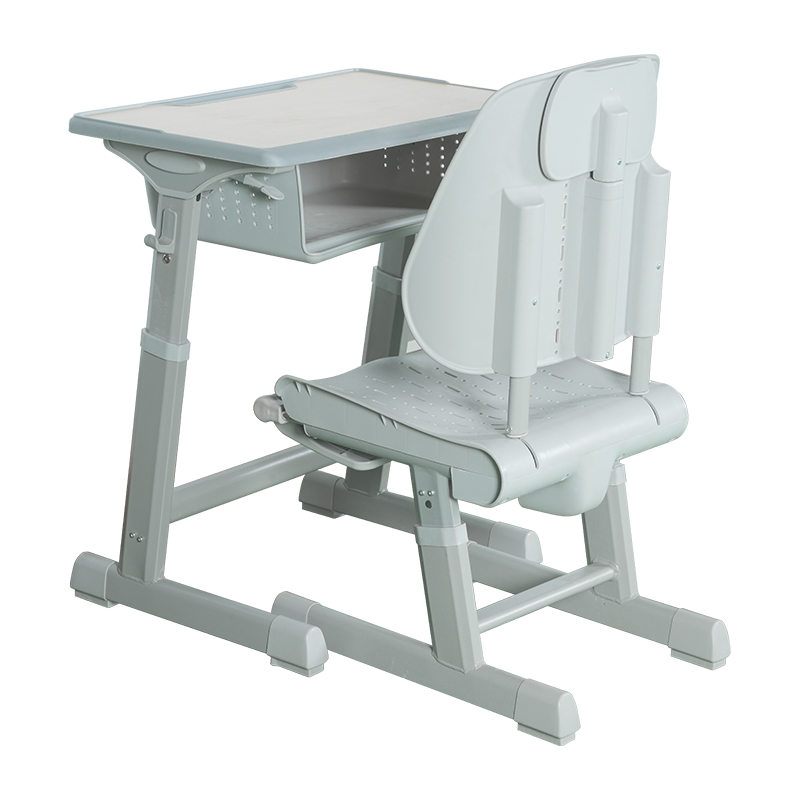The height adjustable study table for students has become an essential piece of furniture in modern educational settings. One of the significant benefits of this design is its accessibility. As classrooms become more diverse in terms of the needs and physical conditions of students, having furniture that adapts to individual requirements has never been more important. The height adjustable study table allows students to adjust their workstations to an ergonomic position, enhancing their comfort and preventing posture-related issues.

For younger students or those with specific physical needs, having an adjustable table means they can maintain a comfortable and healthy sitting posture, which promotes better concentration and reduces fatigue. The accessibility of these desks is not only for students with physical disabilities but for students of all sizes, as it enables a custom fit. The ability to adjust the height of the table also accommodates different learning environments. Whether the student prefers sitting, standing, or working at an incline, the adjustable feature ensures that they are able to work in a way that suits them better.
Moreover, the simple design and easy-to-use adjustment mechanisms make these tables practical for everyday use in busy classrooms. This promotes inclusivity, ensuring that every student can access a desk that supports their learning style and physical needs. The height adjustable study table provides a versatile solution that improves accessibility and fosters an environment where students can focus better and engage with their lessons more effectively.
Classroom chair desks are one of the innovative advancements in educational furniture in recent years. The integration of desks and chairs into a single unit has revolutionized classroom settings by providing students with an all-in-one solution that promotes both efficiency and comfort. This innovation goes beyond merely combining a chair and desk; it focuses on enhancing the functionality and ergonomics of each element to improve the learning environment.
The classroom chair desk incorporates advanced technology in its design to offer increased flexibility and ease of use. Many modern designs feature built-in storage options, such as compartments for books and stationery, reducing clutter and keeping the students personal items organized. The ergonomic nature of these chair desks ensures that students can sit in a comfortable, supportive position for longer periods, reducing physical strain and promoting better posture. These desks are often adjustable, allowing them to cater to different body types and provide an learning experience.
Additionally, many classroom chair desks now come with features like adjustable heights, durable materials, and mobility options, allowing them to be easily moved around for group activities or different seating arrangements. This flexibility encourages collaboration and interaction, two key aspects of modern learning. By combining technology with practical design, classroom chair desks are enhancing classroom dynamics and ensuring that students have the tools they need to succeed.
Collaborative classroom furniture is designed to foster interaction, teamwork, and engagement among students. With the shift toward more interactive and project-based learning, the demand for furniture that supports group work has increased. Collaborative furniture enables students to work together in flexible arrangements, promoting social learning and peer interaction, which is vital for developing critical thinking and communication skills.
Collaborative classroom furniture typically includes modular desks, group tables, and movable chairs that can be easily rearranged to fit the needs of various activities. This flexibility allows teachers to quickly transform the classroom setup for different teaching methods, whether its for group discussions, team projects, or individual tasks. The ability to move and adjust furniture ensures that the classroom environment remains dynamic and responsive to the changing needs of the lesson.
Moreover, collaborative furniture is often designed with technology integration in mind. Many pieces come with built-in ports or spaces for charging devices, allowing students to easily connect laptops, tablets, or other digital tools. This makes it easier for students to engage in collaborative projects using digital resources. The innovation in collaborative classroom furniture helps create a more interactive learning environment, where students are encouraged to share ideas, collaborate, and engage with one another in a supportive and stimulating setting.


 English
English русский
русский Español
Español عربى
عربى
